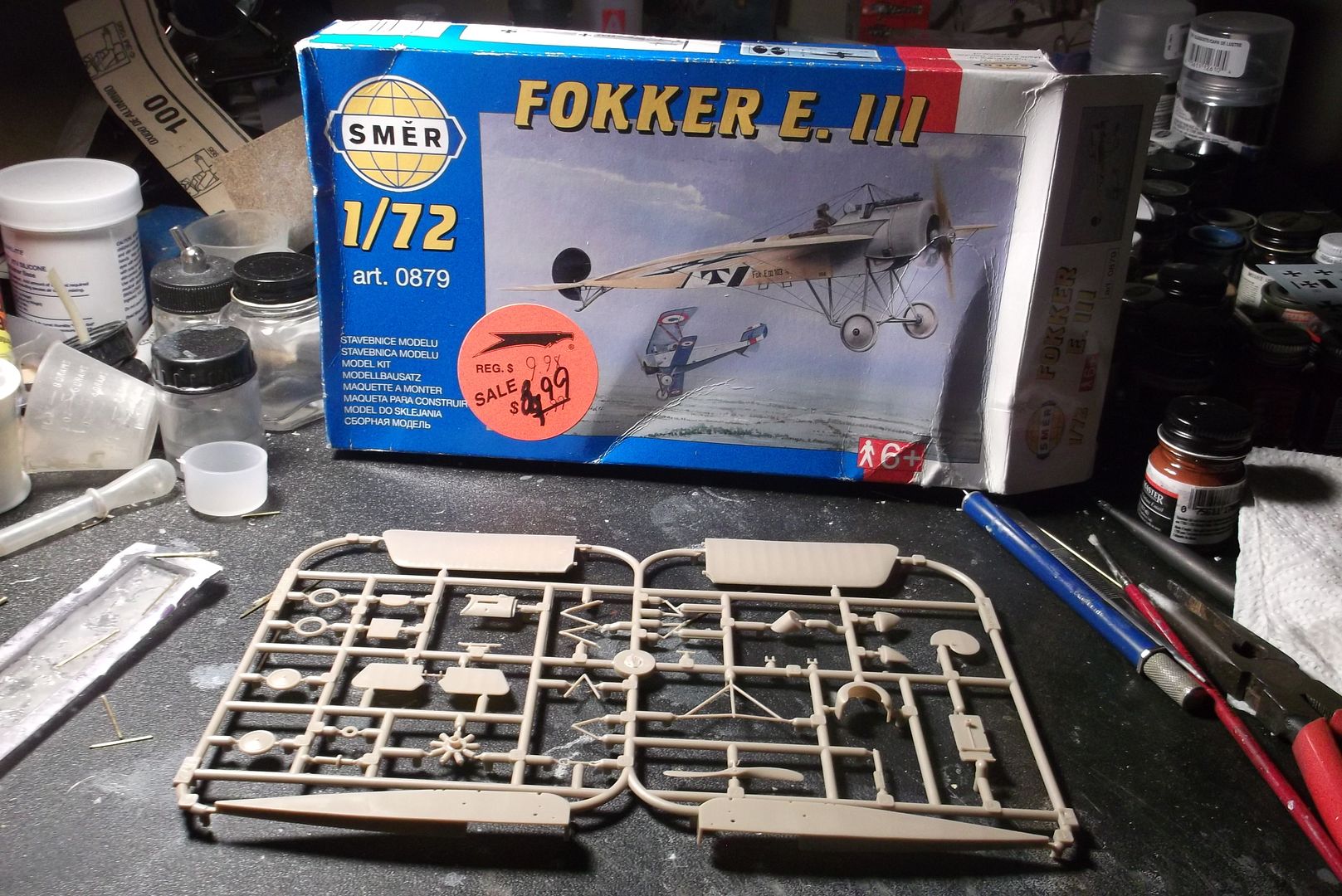First project of the new year: a Fokker E.I. Nobody makes one, so this will be converted from the Eduard E.III kit, which in this case is a reprint from Smer.

The E.I is problematic because there is controversy over exactly what it was. Nobody argues about it, but sources do say different things. What is agreed upon is that Anthony Fokker had four models of his own design, all called 'Spinne' ('Spider') due to the shape of the plane and the amount of rigging. These were later numbered, M1 through M4. At one point he purchased a Morane-Saulnier model 'H' and proceeded to change the fuselage into a structure of welded steel tubing rather than wood. He also redesigned the landing gear to be stronger, and ended up with a much better plane than the Morane, which he called M5. He made two variants, M5K ('Kurz', or short wing) and M5L ('Lange', or long wing). These served as fast unarmed scouts over the front in the days when nobody had a machine gun.
Roland Garros became the first fighter pilot in his Morane 'L' parasol with the Hotchkiss gun firing through deflector plates protecting the propeller. Garros shot down three German two-seaters in two weeks. Then, on April 18, 1915, Garros went down behind German lines, either shot down by German troops as he strafed them, or from engine failure. He and his plane were captured and delivered to Idflieg. According to Anthony Fokker himself the plane was shown to him, he took a machine gun home with him and sketched out and built the world's first working synchonizer gear in just 48 hours. It seems more likely that every major manufacturer was allowed to look at Garros' plane, and the plans for the interrupter gear designed by Franz Schneider the year before were made available. On the other hand what is
not in dispute is that the Fokker design team did indeed come up with the world's first
working synchronizer.
Here is where the controversy comes in. There is no question that the Fokker team fitted machine guns to the M5K, calling it M5K/MG, and had them ready for combat in short order. The problem is that some sources say that all E.Is were M5K/MGs, with the short wing. The one who says differently is Peter M Grosz, who most consider to be the leading expert on all the stuff. Grosz says that only the first five planes were M5K/MG, and the remaining 43 were the long-wing version, built from the factory with the gun installed and designated M14. Which story is the truth? Who knows.
Many years ago I "converted" a Revell E.III kit into an E.I, the only real change being to cut down the wing to the correct span. No seven-cylinder 80hp engine. I didn't realize until later that the one change I did make might be wrong, most of the having the longer wing and the early engine being the only difference. I was planning to replace the engine on that model when I found out another intriguing difference: The early M5 models, both short and long wing, had the wings set up near the top of the fuselage, only being lowered later to improve the pilot's downward vision. I couldn't raise the wing on the Revell kit since it slots into a cutout in the side cowling extensions. The Eduard kit, however, is the opposite: The cowling extension is whole, and the wing has a cutout in the forward leading edge to fit around it. This would make it easy to raise the wing since I would need to shorten it anyway.
This leaves me with a minor dilemma:
1. Replace the engine on the Revell kit and just say it's from later when the wings were lowered. This would leave me with two of the Eduard kits to play with.
2. Build and convert the Eduard kit, giving me the early "raised wing" version. I would have the Revell version on hand, but it couldn't represent a later E.I because it still has the short wings. Someone suggested that I build the Eduard kit and then give the Revell one to a fellow player who doesn't have one. This is probably the best course, because no one but me cares about how many cylinders the engine has or how long the wings are. It would just be a case of "Here, now you have a Fokker E.I."
I'm thinking I'll follow the latter course.